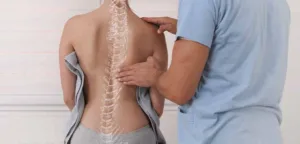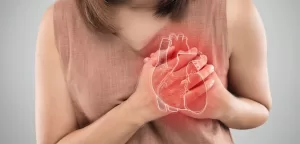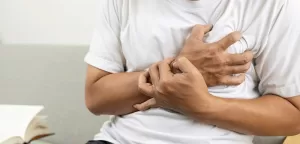+90 533 813 89 77
info@bookingforhealth.com

What is Scoliosis?

What is Scoliosis?
Scoliosis is a condition that causes an abnormal curvature of the spine. The spine is made up of a series of bones called vertebrae that are stacked on top of each other. In a healthy spine, the vertebrae are aligned in a straight line. But in people with scoliosis, the spine can curve to one side (laterally), and also rotate (twist) along its length. The curvature can take on the shape of “S” or “C” and can occur in any part of the spine but is most commonly found in the thoracic (upper back) or lumbar (lower back) regions.
Scoliosis can be classified as structural or non-structural. Structural scoliosis is when there is a fixed deformity of the spine while non-structural scoliosis is when the curve is caused by an underlying condition that can be temporary or reversible such as muscle spasms, inflammation, or a leg length difference.
Scoliosis can be diagnosed through a physical examination and an X-ray of the spine. It can be treated with observation, bracing, and surgery depending on the severity of the condition, the patient’s age, and the patient’s symptoms. Regular check-ups and screenings can help detect scoliosis early, especially for children during their growth spurt.
What are the Causes and Symptoms of Scoliosis?
The cause of scoliosis can be caused by various factors.
- Congenital Malformations: Some babies are born with malformations in their spine which can lead to scoliosis.
- Neuromuscular Disorders: Certain neuromuscular conditions, such as cerebral palsy, can lead to scoliosis.
- Degenerative Conditions: As people age, the spine can degenerate, which can lead to scoliosis.
- Idiopathic: Scoliosis can also be idiopathic, meaning that it has no known cause.
Uneven shoulders or prominence of one shoulder blade, an uneven lower back, a curved spine when viewed from behind, back pain in particularly severe cases, breathing difficulties and fatigue can all be symptoms of scoliosis.
It is important to remember that in many cases scoliosis is asymptomatic, i.e. it does not cause any symptoms and is detected by chance. Therefore, regular check-ups and screenings can help to detect scoliosis early, especially for children in their growing years.
What are Scoliosis Treatment Options?
Scoliosis treatment may vary depending on the severity of the condition, the patient’s age, and symptoms.
- Monitoring: Mild or non-progressive scoliosis can be monitored regularly by a healthcare provider and treatment may not be necessary.
- Support: Bracing can be used to prevent or slow the progression of scoliosis in children who have not yet reached skeletal maturity, bracing is worn most of the day and is designed to keep the spine in proper alignment.
- Physiotherapy: It can help strengthen the muscles around the spine, improve posture and flexibility and reduce pain.
- Surgery: It may be recommended for severe scoliosis or when other treatments are not effective. Surgery aims to straighten the spine and prevent the curve from getting worse. Different types of surgery can be performed, such as posterior spinal fusion, anterior spinal fusion, vertebral column resection, and others.
The treatment plan is tailored to the specific needs of each patient and is developed by a team of orthopaedic surgeons, physiotherapists, and other healthcare professionals. The treatment aims to improve the patient’s quality of life and prevent or delay the onset of serious complications.

How Should the Recovery Process Be Managed After Scoliosis Treatment?
The recovery process after scoliosis treatment can vary depending on the type of treatment and the patient’s overall health. However, in general, the recovery process involves a combination of rest, physical therapy, and rehabilitation exercises.
Immediately after surgery, the focus is on controlling pain, managing swelling, and preventing complications such as infections, blood clots, and bleeding. Patients may be prescribed pain medication and may be closely monitored by the medical team in the intensive care unit (ICU) or a step-down unit. The patient will be placed in a brace or a cast depending on the type of surgery.
The patient is referred to physical therapy and rehabilitation, which includes exercises to increase range of motion, strength, and endurance. The patient is required to undergo physiotherapy for a certain period depending on the type of surgery and the surgeon’s instructions.
After the patient is discharged from the hospital, the patient’s orthopedic surgeon will provide a follow-up care plan that may include regularly scheduled appointments, medications, and lifestyle recommendations. It is extremely important for the patient to limit certain activities such as heavy lifting, and strenuous exercises, and avoid certain activities that may cause injury until they have fully recovered.



